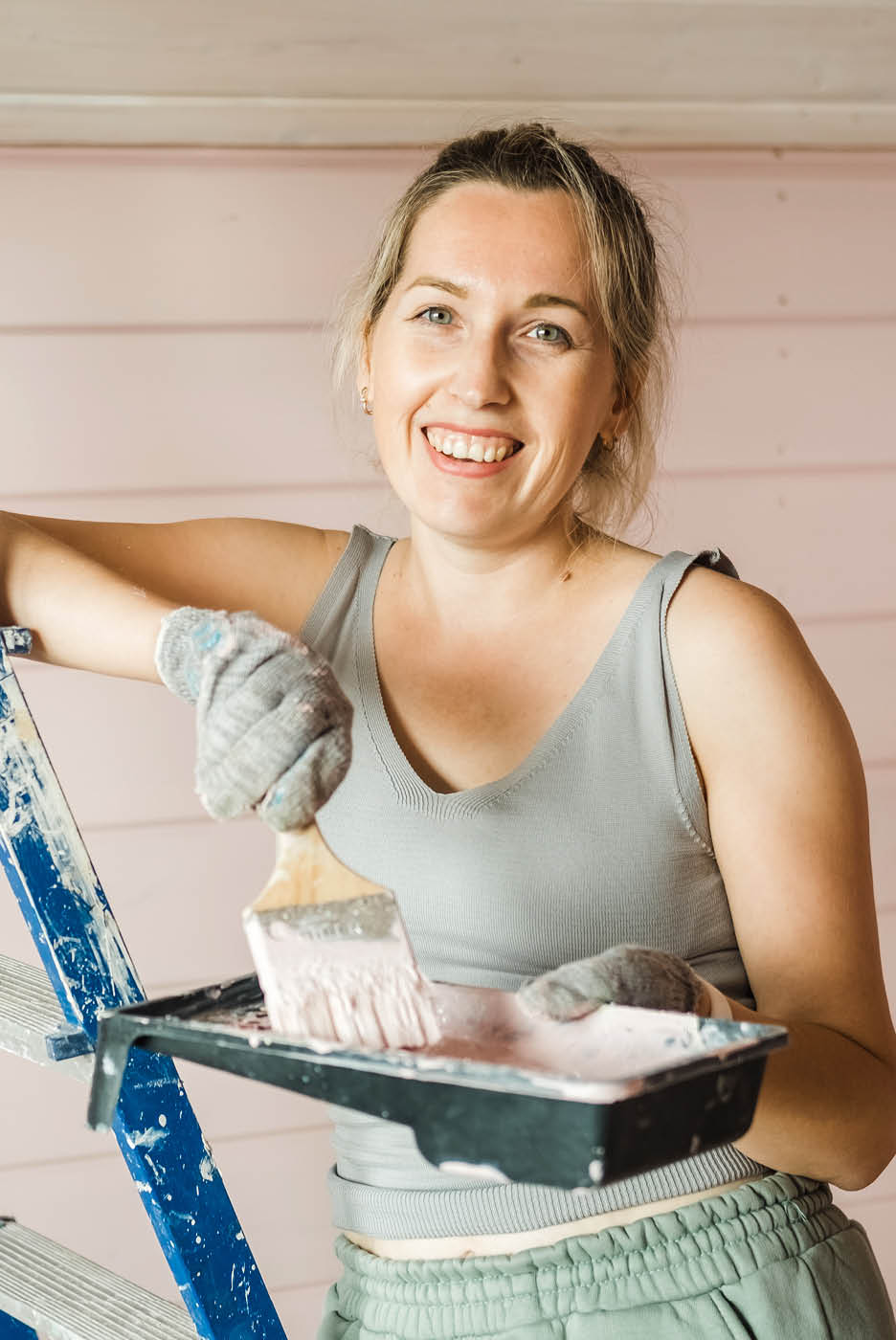There’s a moment in every Instagram renovation reel when I consider leaving journalism to become the full-time project manager of my own home.
My house does require attention – I have cupboard doors that have been hanging at tombstone angles for months – but it’s not just laziness and a substantial skill deficit that have prevented me from ‘getting on the tools’. I come from a family of DIY no-hopers. Nothing in my past or present suggests I’m suited to anything more than basic IKEA assembly. Yet when I’m watching an ordinary mum like me plaster a wall or construct a table from a discarded door, I can’t help but think… surely I could do that?
And I’m hardly the only would-be renovator out there. Enough of us are consuming renovation content to support an army of online DIYers here in Australia, many of whom have hundreds of thousands of followers and collaborations with the likes of Bunnings and Domain.
There’s content for every palate and palette. I love the quick hit of a 20-second upcycling reel (such as the clever updates of tables and bookshelves by upcycler and maker Jaharn Quinn) but my drug of choice is more substantial: the renovation of a full house, ideally one that’s seen better days, over months or even years.
These can be castles and country houses overseas (see Knockderry Castle in Scotland and The Great House, Exmoor) through to a couple flipping houses in Florida and a single mum renovating her public housing in the UK (@alexandremiwren). I scroll past those accounts that show expensive renovations with pale grey walls and challenging chairs, because you can buy anything when you’re rich. It’s graft and penny pinching that stops my thumb dead in its tracks.
“When you see someone ‘real’, there’s a level of perceived authenticity and accessibility,” says Dr Lauren Rosewarne, a University of Melbourne academic who specialises in social media. “If an ordinary, non-specialist can do it, maybe you can, too? That said, as with #CleanTok [TikTok reels showing deep cleans], it’s not like we’re all renovating our homes. There’s an absolute passivity to watching this content. It does make us feel, though, that if we’re going to waste time on social media, at least we’re consuming something productive and educational.”
Many of the amateur renovators who post their progress online are motivated by an altruistic desire to share what they’ve learnt and educate others along the way, says Morgan. “When you achieve something on a reno, you want to share it, particularly if it has taken a lot of effort to get to that point. Sharing how you got there can be useful and inspiring for other people, and it’s nice for renovators to have that community.”
Jaharn Quinn posted her first upcycling video in 2021, after buying a tall timber bookshelf and cabinet on facebook marketplace for $250. They were custom built in 1996, solid but very yellow, and in need of an update. “I decided to share the process on Instagram and the response was amazing,” she says. “I had a very small following back then, shared the highs and lows, and didn’t pretend to know everything. I think that authentic approach has always been true to my projects and it’s something that really resonates with my community.”
From that first project, Quinn’s following has grown to over 40,000 on Instagram and she has collaborated with brands as varied as Castlery and Triumph lingerie. Her content leans heavily on thrift and upcycling, and I’ve been tempted more than once to get out my children’s glue gun for a bit of crafting.
For some followers, DIY projects like Quinn’s can become a creative outlet, says Dr Vicki Andonopoulos, who lectures in marketing at the University of Sydney’s Business School and is an expert in consumer behaviour and social media strategy. “Many people like to have a hobby, whether that’s brewing beer or making bread, as we all did in lockdown,” she says. “It just so happens we’re in a renovation cycle right now.”
There’s an appeal, too, in contributing what you know in the comments section on creators’ accounts. “Sometimes it’s an altruistic impulse to share their own advice with the creator,” she notes.
Sometimes, too, it’s an opportunity to criticise a flooring choice or poorly tiled wall. Even reno accounts aren’t immune to trolls.
Fortunately, though, hapless handywomen have plenty of supporters. If you’re likeable and have a strong narrative arc to your story (think the highs and lows of Grand Designs), there’s every chance your community will rush to your aid, says Andonopoulos. “These reno influencers make us feel we’re in a parasocial [ie one-way] friendship with them.” I saw this protectiveness with UK renovator Alexandra Wren, whose 300,000 followers cheered her on even as she made mistakes and some questionable paint choices. Morgan remembers planting some cactuses in a rooftop garden and being told off for not using Australian natives. “People love telling you what you’re doing wrong,” she says.
Personally, I love the satisfaction in seeing a job from beginning to completion, which it why ‘before and after’ content is so popular. Watching someone complete a job can also be satisfying emotionally at a time when so many of us feel a lack of control in our lives.
“Seeing a job to completion can be therapeutic when you’ve spent a frustrating day at work,” says Andronopoulous. “It’s really satisfying to see a wall being stripped and repainted, or holes patched up.”
Interestingly, she believes the trend of home reno content also reflects a macro economic impulse to save money as the cost of living rises. “I also think that as prices have risen and inflation increased, people are looking to do things themselves.”
Home reno content isn’t restricted to builders or owner-occupiers, either, adds Rosewarne. Increasingly she’s seeing reels that focus on how to improve your rental property without upsetting the landlord. “This is a big departure from 20 years ago, at least in the context of Australia,” she says.
Instagram continues to show me content that satisfies my obviously not-so-secret desire to renovate a mansion. And if I’m ever tempted to pick up a power tool, another project pops up on my feed to remind me that – even though the end result is beautiful – home reno is a lot of work.
“Once the algorithm gets hold of you, it’s hard to escape,” says Morgan. Maybe one day I’ll be inspired to start a project of my own – but I doubt it.













No Comments